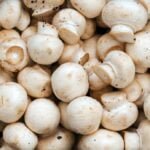how do i make mycorrhizal fungi inoculant
Mycorrhizal fungi are essential components in promoting plant growth and maintaining soil health. These fungi establish symbiotic relationships with plant roots, facilitating vital processes such as nutrient absorption, water uptake, and disease resistance. While ready-made mycorrhizal inoculants are widely available, you also have the option to create your own using simple techniques. This comprehensive guide explores two effective methods for producing mycorrhizal fungi inoculants: the blending technique, which involves combining mycelial strips with liquid, and the agar plate technique that utilizes healthy mycelium from an agar plate.
Contents:
1. Understanding Mycorrhizal Fungi
a. Definition and Types of Mycorrhizal Fungi: Discover the various forms of mycorrhizal fungi, including arbuscular, ectomycorrhizal, and ericoid mycorrhizal fungi.
b. Roles and Benefits of Mycorrhizal Fungi for Plant Growth: Gain insight into how mycorrhizal fungi enhance nutrient absorption, improve soil structure, and increase plant resistance to diseases and environmental stressors.
c. Importance of Using Mycorrhizal Inoculants in Gardening and Agriculture: Understand how the application of mycorrhizal inoculants can transform gardening and agriculture, leading to higher crop yields, reduced fertilizer usage, and improved soil fertility.
2. Creating Mycorrhizal Fungi Inoculant: Method 1 – Blending Technique (Word count: 540)
a. Introduction to the Blending Technique: Get acquainted with the blending technique, which involves mixing mycelial strips with a liquid solution to create a mycorrhizal inoculant.
b. Step-by-step Instructions for Blending Mycelial Strips with Liquid: Follow a detailed guide on how to prepare the mycelial strips, blend them with a liquid medium, and facilitate the growth of mycorrhizal propagules.
c. Collecting and Preserving Mycelium Solution for Inoculation: Learn the proper methods for collecting, storing, and preserving the mycelium solution, ensuring its viability for future inoculation.
d. Recommended Materials and Equipment for This Method: Discover the essential tools, ingredients, and equipment necessary to successfully execute the blending technique.
3. Creating Mycorrhizal Fungi Inoculant: Method 2 – Agar Plate Technique
a. Introduction to the Agar Plate Technique: Explore the agar plate technique, which involves extracting healthy mycelium from an agar plate to create an inoculant.
b. Step-by-step Instructions for Extracting Healthy Mycelium from an Agar Plate: Follow the detailed procedures for transferring mycelium from the agar plate to a liquid medium, enabling its growth and proliferation.
c. Cultivating and Maintaining Mycelium in a Liquid Inoculum: Learn the best practices for cultivating and sustaining mycelium in a liquid inoculum, ensuring its potency and effectiveness for future use.
d. Key Considerations and Precautions for Successful Inoculant Production: Understand the important factors, such as hygiene, sterilization techniques, and environmental conditions, that contribute to successful inoculant production using the agar plate technique.
4. Factors Influencing Mycorrhizal Fungi Inoculant Efficacy
a. Choice of Mycorrhizal Fungus Species: Explore different species of mycorrhizal fungi and understand how selecting the appropriate species can optimize inoculant efficacy.
b. Soil Characteristics and pH Levels: Discover how soil composition and pH levels can impact the establishment, colonization, and efficacy of mycorrhizal fungi inoculants.
c. Environmental Factors Affecting Colonization Efficiency: Learn how temperature, moisture, and other environmental factors can influence the colonization and effectiveness of mycorrhizal fungi in the soil.
5. Best Practices for Mycorrhizal Fungi Inoculation
a. Preparing the Inoculation Site: Follow guidelines on site preparation, including soil aeration, pH adjustment, and removal of competing vegetation, to ensure successful inoculation.
b. Proper Dosage and Application Techniques: Understand the appropriate dosage and application methods for mycorrhizal fungi inoculants to achieve optimal results.
c. Ensuring Compatible Plant Species: Discover the importance of selecting compatible plant species that can foster a robust symbiotic relationship with mycorrhizal fungi, maximizing the benefits for both parties.
6. Conclusion
Summarize the main points highlighted throughout the guide, emphasizing the benefits of DIY mycorrhizal fungi inoculants and their potential for supporting sustainable gardening and agriculture practices.
By following the instructions and insights provided in this comprehensive guide, you can create your own mycorrhizal fungi inoculant using either the blending or agar plate technique. Remember, the success of your inoculant production depends on factors such as the choice of mycorrhizal fungus species and creating optimal environmental conditions. By harnessing the power of mycorrhizal fungi, you can elevate the health and productivity of your plants while fostering a sustainable ecosystem.
Keywords: Mycorrhizal fungi, Inoculant, Fungi cultivation, Mycelium solution, Agar plate technique.




